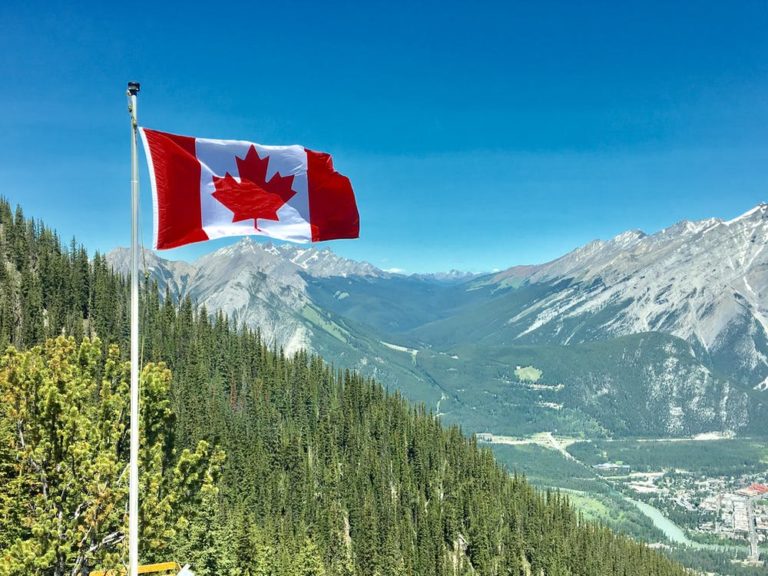Traveling to Canada can be an unforgettable experience, but understanding Canada travel warnings is essential to ensure a safe and enjoyable journey. From breathtaking landscapes to vibrant cities, Canada offers a wealth of opportunities for adventure. However, staying informed about travel advisories and potential risks is crucial to avoid unpleasant surprises. This guide will help you navigate Canada travel warnings and provide actionable advice to keep you safe.
Whether you're planning a trip to explore the majestic Rockies, experience the cosmopolitan vibe of Toronto, or indulge in the serene beauty of the Maritimes, being aware of travel warnings is a must. Understanding the nuances of Canada's safety landscape can make all the difference in your travel experience.
This article delves into the latest Canada travel warnings, covering everything from weather-related advisories to crime prevention tips. By the end, you'll have a comprehensive understanding of how to prepare for your trip and stay safe while exploring this beautiful country.
Read also:Lynne Foose A Comprehensive Guide To Her Life Career And Achievements
Table of Contents
- Introduction to Canada Travel Warnings
- Biography of Canada's Safety Landscape
- Understanding Canada Travel Warnings
- Weather-Related Canada Travel Warnings
- Crime Prevention Tips for Travelers
- Health and Medical Warnings in Canada
- Wildlife Encounters and Safety
- Transportation Safety in Canada
- Border Crossing and Customs Regulations
- Essential Travel Tips for Canada
Introduction to Canada Travel Warnings
Canada is renowned for its breathtaking scenery and friendly people, but like any destination, it comes with its own set of challenges and potential risks. Understanding Canada travel warnings is the first step toward a safe and enjoyable trip. Travel advisories issued by governments and organizations aim to inform travelers about potential dangers they may encounter while visiting Canada.
These warnings cover a wide range of topics, from severe weather conditions to crime rates in certain areas. By familiarizing yourself with these advisories, you can take proactive steps to mitigate risks and enhance your travel experience. Below, we'll explore the key aspects of Canada travel warnings in detail.
Biography of Canada's Safety Landscape
Canada boasts one of the safest environments in the world, but it's not without its challenges. The country's vast geography and diverse climates mean that travelers must be prepared for various conditions. Below is a summary of key safety factors in Canada:
Data Overview
| Factor | Details |
|---|---|
| Population | Approximately 39 million (2023) |
| Crime Rate | Low overall, with some urban areas experiencing higher crime rates |
| Weather Extremes | Severe winters in northern regions, occasional storms in coastal areas |
| Healthcare | High-quality healthcare available nationwide |
Understanding Canada Travel Warnings
Canada travel warnings are typically issued by government agencies such as the Government of Canada or the U.S. Department of State. These advisories provide critical information about potential risks, including natural disasters, crime, and health concerns. Below are the key components of these warnings:
Types of Travel Warnings
- Level 1: Exercise Normal Precautions – Minimal risk, typical for most Canadian cities.
- Level 2: Exercise Increased Caution – Moderate risk, often related to specific regions or activities.
- Level 3: Reconsider Travel – Significant risk, usually due to ongoing issues like natural disasters or civil unrest.
- Level 4: Do Not Travel – Extreme risk, rare for Canada but possible in remote or conflict-prone areas.
Weather-Related Canada Travel Warnings
Canada's weather can vary dramatically depending on the region and season. Winter conditions, in particular, can pose significant risks to travelers unprepared for extreme cold or snowstorms. Below are some key considerations:
Preparing for Winter Weather
- Wear layers of warm clothing, including insulated jackets, gloves, and boots.
- Carry emergency supplies in your vehicle, such as blankets and non-perishable food.
- Check weather forecasts regularly and avoid traveling during severe storms.
According to the Canadian Meteorological Service, winter temperatures in northern regions can drop to -40°C or lower. Travelers should be aware of the signs of frostbite and hypothermia and seek shelter immediately if necessary.
Read also:Golden Tate Seahawks The Underrated Legacy Of A Versatile Wide Receiver
Crime Prevention Tips for Travelers
Crime rates in Canada are generally low, but certain areas, particularly in urban centers, may experience higher levels of petty crime such as theft or vandalism. To stay safe, follow these tips:
Staying Safe in Urban Areas
- Avoid displaying expensive jewelry or electronics in public.
- Keep your belongings secure at all times, especially in crowded areas.
- Use reputable transportation services and avoid walking alone at night in unfamiliar areas.
Data from Statistics Canada indicates that violent crime rates have been steadily declining over the past decade. However, travelers should remain vigilant and report any suspicious activity to local authorities.
Health and Medical Warnings in Canada
Canada's healthcare system is highly regarded, but travelers should still take precautions to ensure their well-being. Below are some key health considerations:
Vaccinations and Health Precautions
- Ensure all routine vaccinations are up-to-date before traveling.
- Consider purchasing travel insurance that covers medical emergencies.
- Be aware of seasonal flu outbreaks and take preventive measures such as handwashing.
While Canada does not have endemic diseases like malaria or dengue fever, travelers should still be cautious about food and water safety, especially when dining at street vendors.
Wildlife Encounters and Safety
Canada's wilderness is home to a variety of wildlife, including bears, wolves, and moose. Encountering these animals can be thrilling but also dangerous if proper precautions are not taken. Below are some tips for staying safe:
Wildlife Safety Tips
- Carry bear spray when hiking in bear-prone areas and know how to use it.
- Store food securely in bear-proof containers when camping.
- Do not approach or feed wild animals, no matter how tame they may appear.
According to Parks Canada, bear encounters are rare but can be fatal if not handled correctly. Always follow park guidelines and report any sightings to rangers.
Transportation Safety in Canada
Canada's transportation infrastructure is well-developed, but travelers should still exercise caution when using public or private transportation. Below are some key considerations:
Driving in Canada
- Familiarize yourself with local traffic laws and road conditions.
- Use winter tires in snowy or icy conditions to improve traction.
- Do not drink and drive, as penalties for DUI are severe in Canada.
Data from Transport Canada shows that road accidents are a leading cause of injury among travelers. Always prioritize safety by wearing seat belts and avoiding distractions while driving.
Border Crossing and Customs Regulations
Travelers entering Canada must comply with strict border crossing and customs regulations. Below are some important points to consider:
What to Expect at the Border
- Carry valid travel documents, such as a passport or visa if required.
- Declare all goods purchased abroad to avoid fines or confiscation.
- Be prepared to answer questions about your travel plans and purpose of visit.
The Canada Border Services Agency (CBSA) enforces these regulations to ensure national security and prevent illegal activities. Travelers should always follow guidelines to avoid delays or complications.
Essential Travel Tips for Canada
To ensure a smooth and enjoyable trip to Canada, consider the following tips:
Planning Your Trip
- Research your destination thoroughly and plan your itinerary in advance.
- Book accommodations and transportation ahead of time, especially during peak travel seasons.
- Stay informed about current travel advisories and adjust your plans accordingly.
By taking the time to prepare and understand Canada travel warnings, you can maximize your safety and enjoyment while exploring this incredible country.
Conclusion
Canada travel warnings provide valuable information to help travelers stay safe and informed during their journeys. By understanding the nuances of weather conditions, crime prevention, health considerations, and wildlife safety, you can minimize risks and enhance your travel experience. Always check the latest advisories from reliable sources and take proactive steps to ensure your well-being.
We invite you to share your thoughts and experiences in the comments below. Additionally, feel free to explore our other articles for more travel tips and insights. Safe travels and happy exploring!


